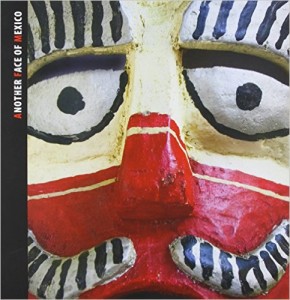Time: 5:00–7:00 p.m.
Location: Hotel Aldea, Ancha de San Antonio #15
Admission: $50 pesos for Literary Sala members, $100 for non-members. Includes a wine reception.
Two Faces of Latin America at the Literary Sala
By Carole Schor
The Literary Sala is proud to present two Latin American legends. Henrietta Boggs MacGuire was the First Lady of Costa Rica and she spent part of her life influencing major policies in her adopted country. Bill Le Vasseur is a widely recognized expert on Mexican indigenous ceremonies and masks.
Henrietta Boggs McGuire
Married to a Legend: Don Pepe is the autobiography of Dona Henrietta’s life during her time in Costa Rica and her marriage to Don Pepe Figueres, former President of Costa Rica. Henrietta was originally from Birmingham, Alabama, and is now residing in Montgomery. She was a young woman from a privileged life in the American South who became the First Lady of the Second Republic of Costa Rica, South America, one of only two countries to abolish its own military and become a country of peace.
Her story is one of adventure, marriage, exile, motherhood, and revolution. It begins in 1940 when Henrietta received a postcard from an aunt and uncle who had settled in Costa Rica inviting her to come and spend some time with them in their adopted country. Henrietta was, and is even into her 90s, an adventurer, a world traveler, a brave and courageous woman who has had many incredible life experiences, and so she said, “Yes!” to the visit. At lunch one day, she met the future President and soon after she said “Yes!” to him and to Costa Rica.
A documentary movie, First Lady of the Revolution, recounts Henrietta’s life and especially the significant policy changes she influenced, including helping women win the right to vote and overturning racist restrictions that limited black people to living in the coastal areas. Married to a Legend: Don Pepe, was published in 1992 and is required reading for Costa Rican schoolchildren.
Bill Le Vasseur
Bill Le Vasseur is the author Another Face of Mexico, a beautiful work cataloguing the many masks he has found and collected over 25 years of traveling around the Mexican countryside, witnessing and enjoying the cultural landscape of the indigenous people living here in Mexico. Most of us know him as the owner, with his wife Heidi, of Casa de la Cuesta, one of the most beautiful colonial inns here in San Miguel and the site of the Mask Museum, housing one of the world’s largest and most interesting collections of ceremonial masks that have been used for centuries in the dances of native Mexico.
According to Le Vasseur, who calls himself an amateur ethnographer, “Each mask is a touchstone to a different indigenous culture, a special story, a particular dance.” Bill’s travels may consist of driving to a distant town, continuing four or six hours up mountainous switchbacks, and then hiking another kilometer to get to a dance site, sometimes sleeping in his car in remote villages. These adventures have yielded a bounty of over 1000 masks, 500 of which can be seen in the mask museum (be sure to ask him which one is his favorite mask!)
“It’s not as if I collect masks per se,” he explains. “Rather, I collect living history, spirit, the multi-faceted culture of Mexico. This country is incredibly diverse and ethnic,” he says.
Understanding the roots of the dance or ceremony has been a fascinating way to better understand the indigenous history and culture of Mexico.
Bill’s book (and the name of the museum), Another Face of Mexico, serves as a catalog for the museum, exploring Mexican indigenous mask ceremonies and dances. “The dancer’s desire to transform, to disguise, to imagine, to act out, to be something or someone that they are not, to hide, and to pretend, are all compulsions that can be satisfied by masking.”



Comments are closed, but trackbacks and pingbacks are open.